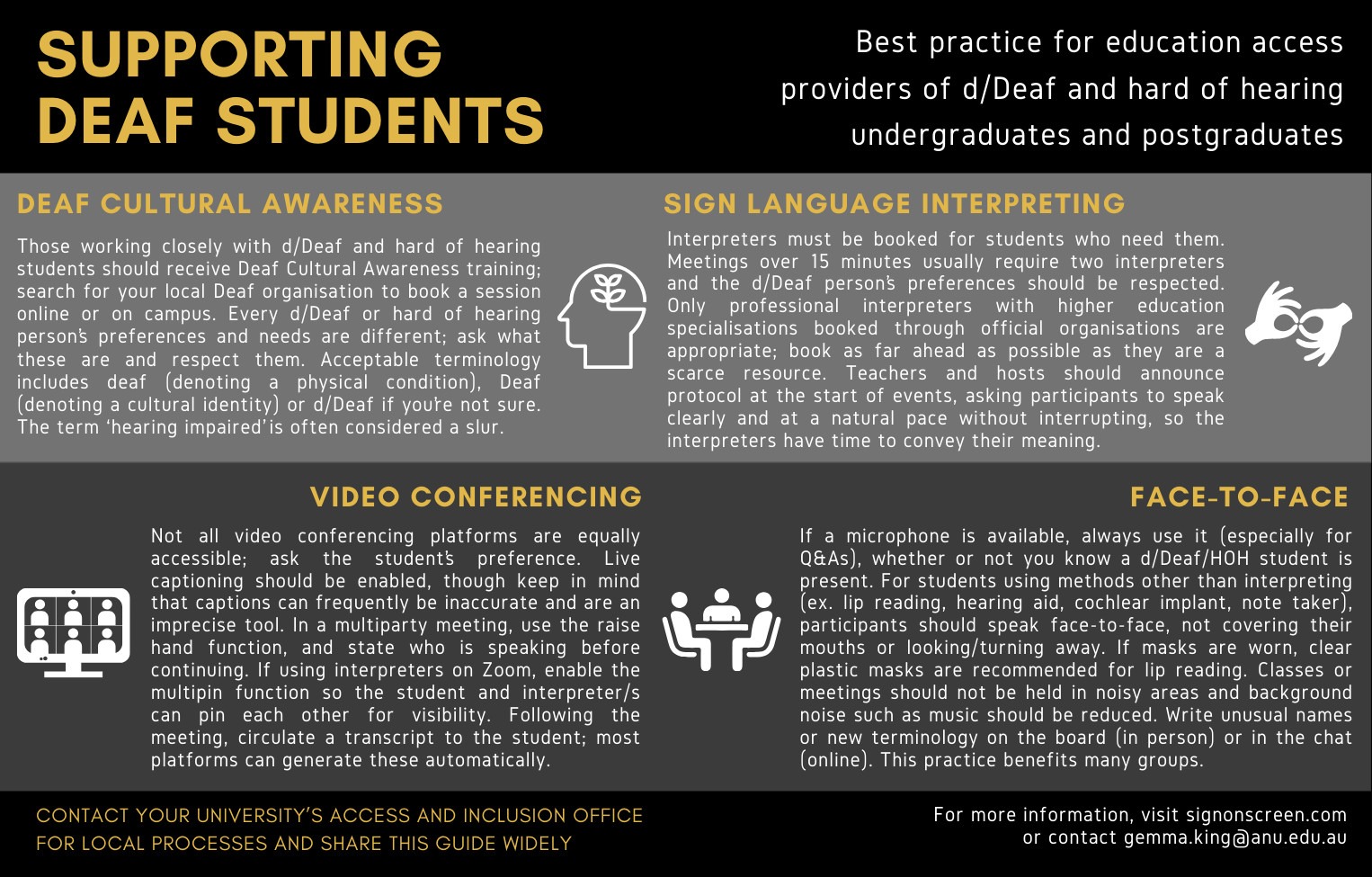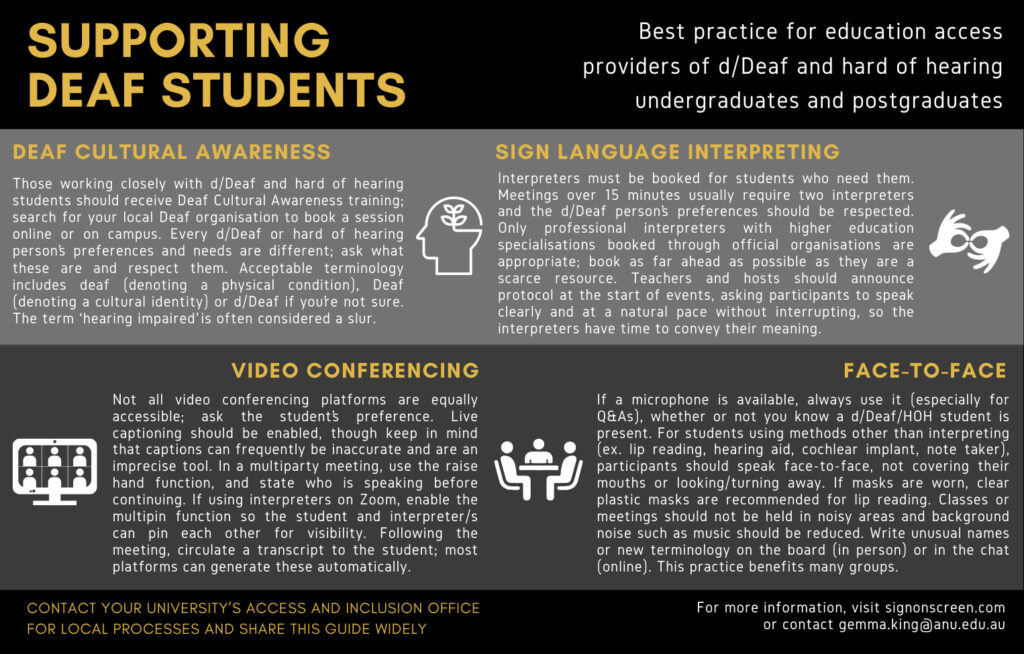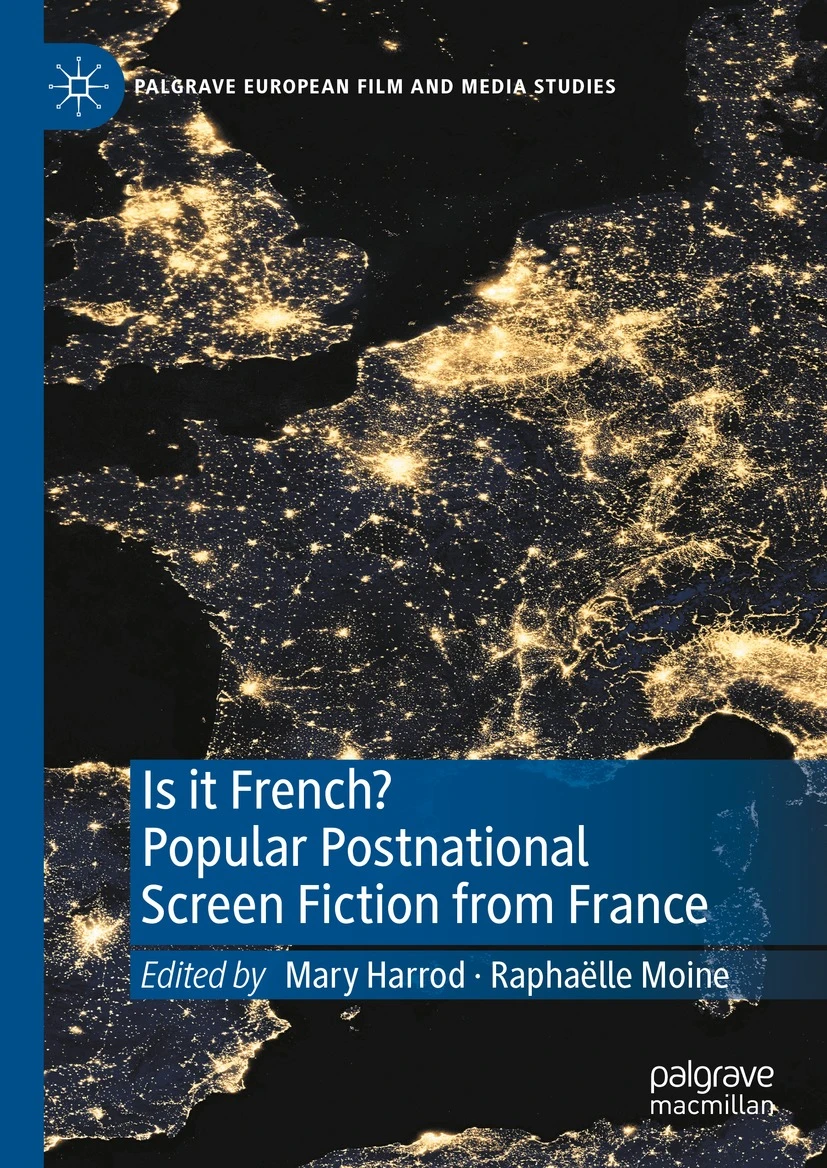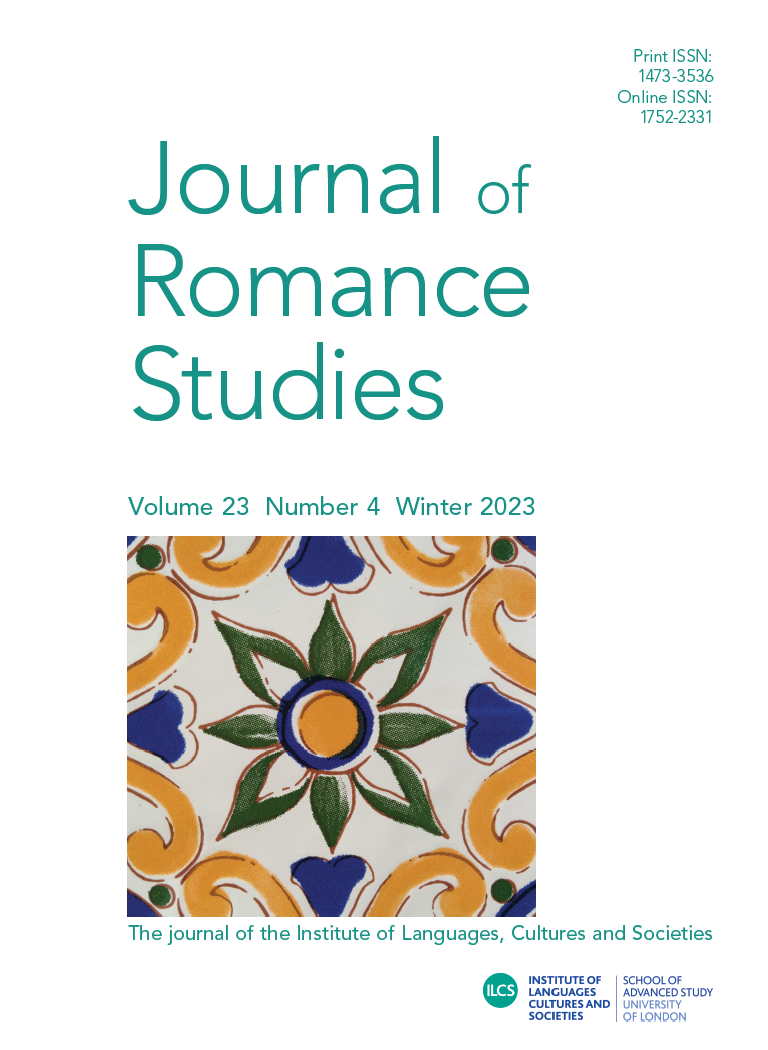-
 May 26, 2025Sofya Gollan, Gemma King and Sam Martin
May 26, 2025Sofya Gollan, Gemma King and Sam MartinDeaf President Now! traces the powerful uprising that led to Deaf rights in the US – now again under threat
In March 1988, students of the world’s only Deaf university started a revolution that made national news. Now, the first film to document this historic uprising is screening on Apple TV+.
At the same time, American universities are grappling with the consequences of President Donald Trump’s war on diversity, equity and inclusion.
-
 May 8, 2025Gemma King
May 8, 2025Gemma KingDIPLOMACY AND RESISTANCE: HOW DUNE SHOWS US THE POWER OF LANGUAGE- INCLUDING SIGN LANGUAGE
In Dune’s sandswept colonialist dystopia of the distant future, power is a force best handled – and transferred – surreptitiously. In a world of ultra-wealthy spice barons and interplanetary warfare, the greatest asset in both diplomacy and resistance is an intangible one: language. Nowhere is this clearer than in the films’ portrayal of sign language…
-
 January 23, 2025Gemma King and Sofya Gollan et. al.
January 23, 2025Gemma King and Sofya Gollan et. al.Open Use Guide: Supporting Deaf Students
This guide was compiled by Deaf, HOH and hearing staff, students and interpreters at the Australian National University in 2024. Please use, print and share this guide freely across your university, school, workplace or other institution and ensure you credit Sign on Screen when citing it. Select ‘open in new tab’ for a larger view and to download the infographic or for a plain text version, click here. We urge educational institutions to incorporate these measures into all educational access provisions for d/Deaf and hard of hearing students and researchers and to pass these recommendations on to future education providers. For the original file or questions or suggestions about this guide, email gemma.king@anu.edu.au.

-
 January 31, 2024Gemma King
January 31, 2024Gemma KingSign Language, Multilingualism and the Postnational Popular Screen: From La Famille Bélier and Marie Heurtin to La Révolution
Since the mid-2000s, the representation of multiple languages on French screens has increased significantly. However, an understudied element of this cinema is the growing corpus of films and series in French Sign Language (LSF). This chapter explores the evolution of multilingual French cinema in the twenty-first century. Placing Indigenous multilingualism within a broader translingual context, it focuses on the 2014 films La Famille Bélier/The Bélier Family (Eric Lartigau) and Marie Heurtin (Jean-Pierre Améris) and the 2020 series La Révolution/The Revolution (François Lardenois and Aurélien Molas) to examine the relationship between French Sign Language and French through a postnational lens. The chapter explores how these LSF texts challenge received norms of Frenchness, their connection to the French language and what ‘national language’ means for a nation that was always already multilingual.
-
 March 25, 2023Gemma King
March 25, 2023Gemma KingSign language and cinéma-monde in Marie Heurtin: On Deaf cinema and troubling the notion of French national language
What can films in French Sign Language teach us about the French nation? From its inception in Bill Marshall’s 2012 article of the same name, cinémamonde has been concerned with borders: linguistic and geographic, internal and external. Cinéma-monde equips us to decenter the concept of French national cinema, to unthink historical, monolingual notions of Frenchness and to reconceive of francophone film-making in terms of plurality, diversity, and transcultural exchange. However, this reimagining has generally been conceived of in transnational terms, and not as a means of interrogating the inherent, original multilingualism of the Hexagon itself. This article examines contemporary French Deaf cinema through a cinéma-monde lens. It focuses on Jean-Pierre Améris’s 2014 film Marie Heurtin [Marie’s Story], about the sign language education of a deaf-blind girl in rural nineteenth-century France, critiquing the notion of the language barrier to evoke the border within. In so doing, it uses Marshall’s description of how ‘the boundaries of, say, national identification have to be understood as being reflected in the nation’s internal limits, the impossibility of being fully, purely, and unproblematically French’ (2012: 42), to critique Republican myths of monism and national language.

